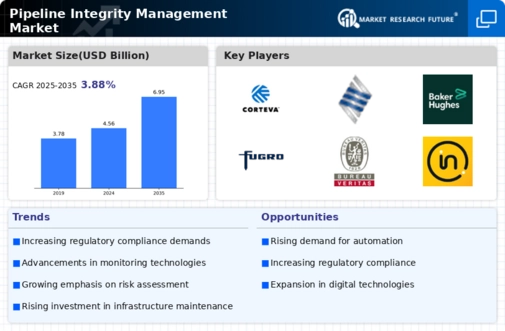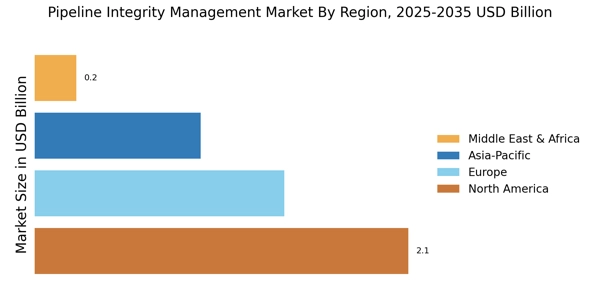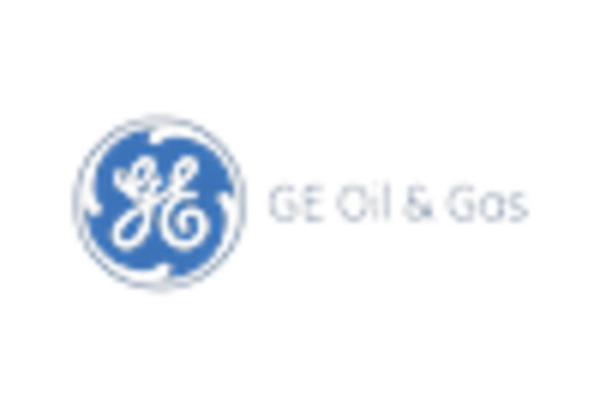Growing Environmental Concerns
Environmental concerns are increasingly influencing the Pipeline Integrity Management Market. As awareness of climate change and ecological impacts rises, regulatory bodies are imposing stricter environmental standards on pipeline operations. Companies are compelled to adopt integrity management practices that minimize environmental risks, such as spills and leaks. This shift is likely to drive investments in advanced integrity management solutions, as organizations seek to comply with regulations while maintaining operational efficiency. The market is expected to see a notable increase in demand for environmentally friendly technologies, which could reshape the landscape of pipeline integrity management.
Increasing Demand for Energy Security
The Pipeline Integrity Management Market is experiencing a surge in demand for energy security, driven by the need for reliable and uninterrupted energy supply. As nations strive to enhance their energy independence, the integrity of pipeline systems becomes paramount. This demand is reflected in the projected growth of the pipeline integrity management market, which is expected to reach USD 10 billion by 2026. Companies are investing in advanced monitoring technologies to ensure the safety and reliability of their pipeline networks. The emphasis on energy security is likely to propel the adoption of integrity management solutions, as stakeholders seek to mitigate risks associated with pipeline failures and leaks.
Rising Incidents of Pipeline Failures
The rising incidents of pipeline failures are a pressing concern that is driving the Pipeline Integrity Management Market. High-profile accidents and leaks have underscored the importance of effective integrity management practices. As a result, companies are increasingly prioritizing the implementation of comprehensive integrity management programs to mitigate risks. The financial implications of pipeline failures, including cleanup costs and regulatory fines, are prompting operators to invest in advanced monitoring and maintenance solutions. This trend is expected to contribute to the growth of the pipeline integrity management market, as organizations seek to enhance their safety protocols and protect their assets.
Investment in Infrastructure Development
Investment in infrastructure development is a key driver of the Pipeline Integrity Management Market. As countries focus on modernizing their energy infrastructure, the need for robust pipeline systems becomes critical. This trend is evident in various regions, where governments are allocating substantial budgets for pipeline construction and upgrades. The market for pipeline integrity management solutions is anticipated to benefit from this influx of investment, as operators seek to ensure the safety and reliability of newly constructed and existing pipelines. The emphasis on infrastructure resilience is likely to create opportunities for innovative integrity management technologies.
Technological Advancements in Monitoring Solutions
Technological advancements are significantly shaping the Pipeline Integrity Management Market. Innovations such as smart sensors, drones, and artificial intelligence are enhancing the capabilities of pipeline monitoring systems. These technologies enable real-time data collection and analysis, allowing for proactive maintenance and risk assessment. The market for these advanced monitoring solutions is projected to grow at a compound annual growth rate of 8% from 2025 to 2030. As operators increasingly recognize the value of predictive maintenance, the integration of these technologies into pipeline integrity management strategies is becoming essential for ensuring operational efficiency and safety.


















Leave a Comment